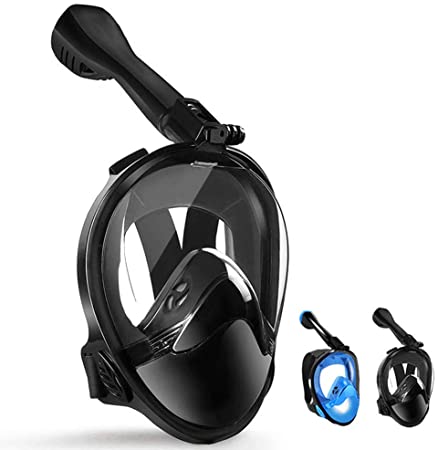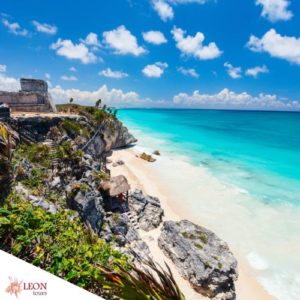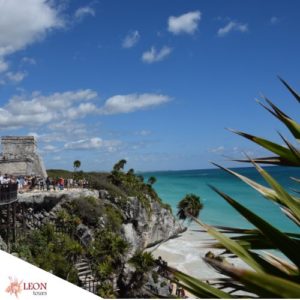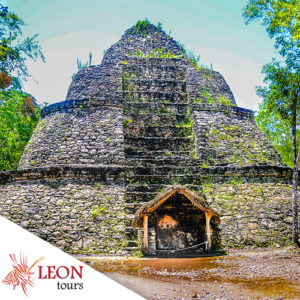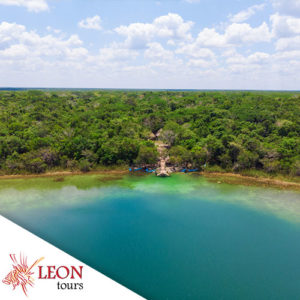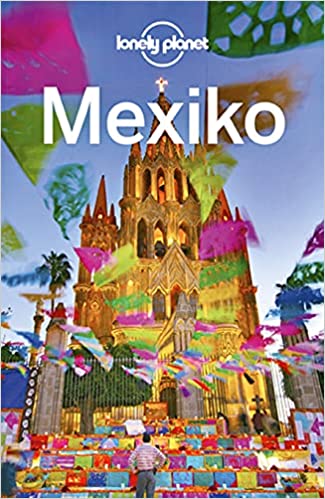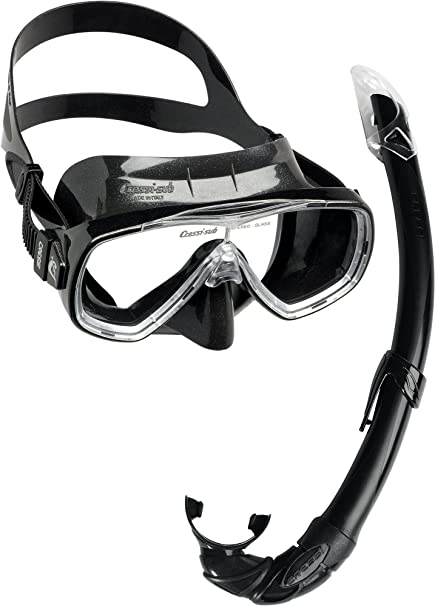Cenotes in Mexico
The best Cenotes of the Riviera Maya
The best cenotes in Mexico: Magic Oases
-> The best Tequila from Mexico
How did the cenotes emerge in Mexico?
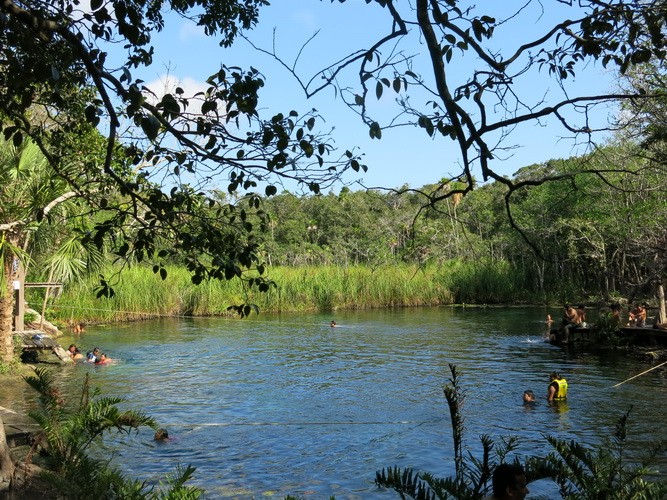
Yucatan Peninsula: Cenotes in Mexico, here Conote Corazon, Tulum
Important for the Maya: Cenotes are entrances to the Mayan underworld called Xibalba

The Maya went to the cenotes when they wanted to contact the gods of the underworld. Even today, some cenotes are sacred places for the Mayan descenders, where ceremonies are performed. The term cenote is derived from the Mayan language, “Dzonot” means “water hole”. They are probably the basis for the development of the Mayan culture in southeast Mexico. All important Mayan sites on the Yucatan Peninsula are located close to cenotes. They provided the water supply for the Mayan cities with several thousand inhabitants.
Cenotes meant duality for the ancient Maya. Here the transition from the world of life to the world of the dead took place. Aluxes, guardians of the forests and cenotes, are still worshiped with ancient rituals and offerings. Aluxes are knee-high creatures, living in the jungle. They have to be asked for permission when entering or building on their areas. Otherwise, great misfortune can happen
Cenotes in Mexico in today’s time
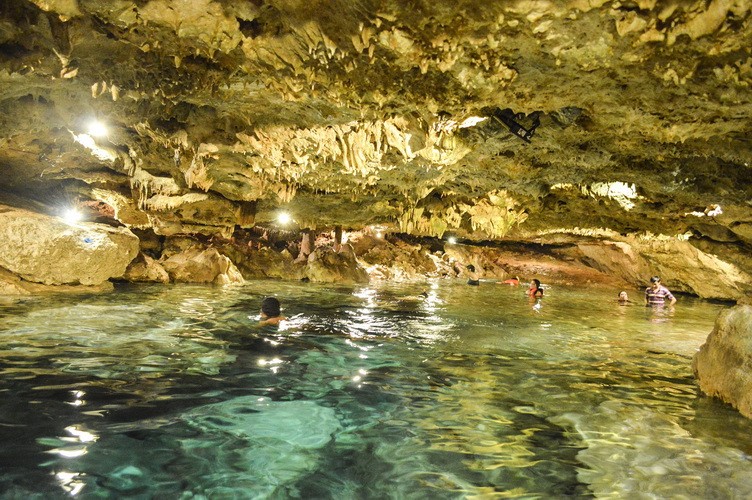
Cenotes Yucatan Peninsula
Archeology
Parts of the caves that are now under water were not yet flooded during the Maya period. Archaeologists and cave divers explore the cenotes in Mexico to find information about past life. For example, a skeleton of at least 12,000 years old was found in the Hoyo Negro cave on the Yucatan Peninsula in 2014. This got a lot of attention in the world of archeology (see video below).
Water supply
The largest underground water system supplies the region of the Yucatan Peninsula with drinking water.
Tourist importance
For visitors to the Riviera Maya, the cenotes are one of the most important sights. Whether snorkeling, swimming, diving or discovering, adventurers and those interested in culture, there are cenotes for every interest.
Types of cenotes in Mexico
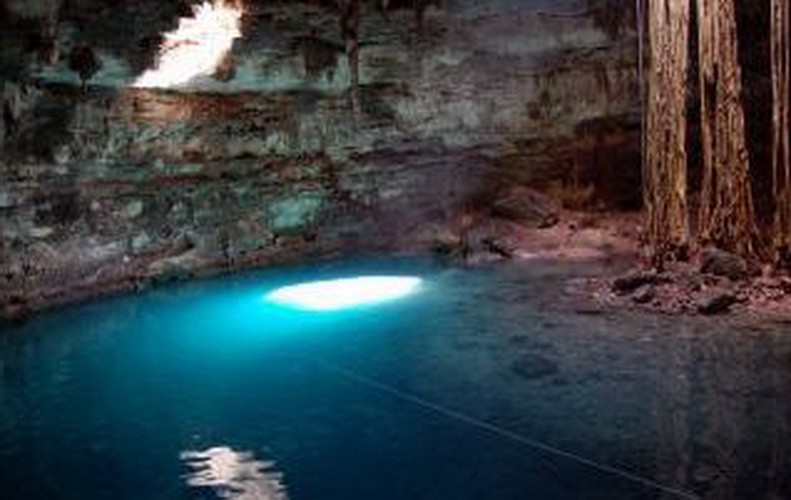
Cenotes Yucatan Peninsula
Cenotes as caves
Completely covered with karst rock, these cenotes are often many meters underground. They can be filled with water or dry. It depends on the water level. Sometimes the light enters through cracks or openings. Then there are impressive light shows that often resemble a laser show.
Half-open cenotes
Half-open cenotes are often just the entrance to deeper cave systems. A field covers water or grottos underneath. Light penetrates and creates a mystical atmosphere.
Open cenotes
Open cenotes nestle into the landscape like a lake. They usually hide other caves with which they are connected. For example, divers often enter an open cenote into a cave beyond.
Sulfur clouds in cenotes
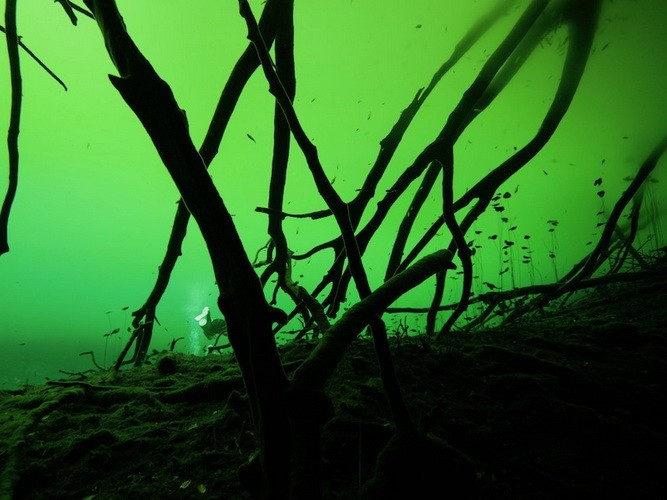
Mexico Cenotes: sulfur clouds create a mystical atmosphere
The water in the cenotes is one of the clearest waters in the world. It has a visibility of up to 100% or 600 feet (clearer water can only be found under the ice caps of the South Pole). Sunscreen, even biodegradable sunscreen or Mosquito Spray can contaminate the water and are therefore prohibited. That’s why you’ll find showers on many publicly accessible cenotes; to clean the skin before entering the cenotes in Mexico.
The best Cenotes in Mexico
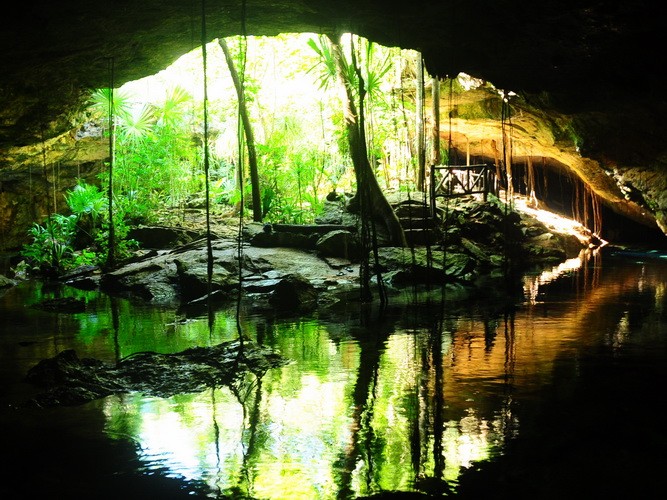
Cenotes in Mexico: The water is often in an underground cave
The best Cenotes in Mexico: Xel Ha
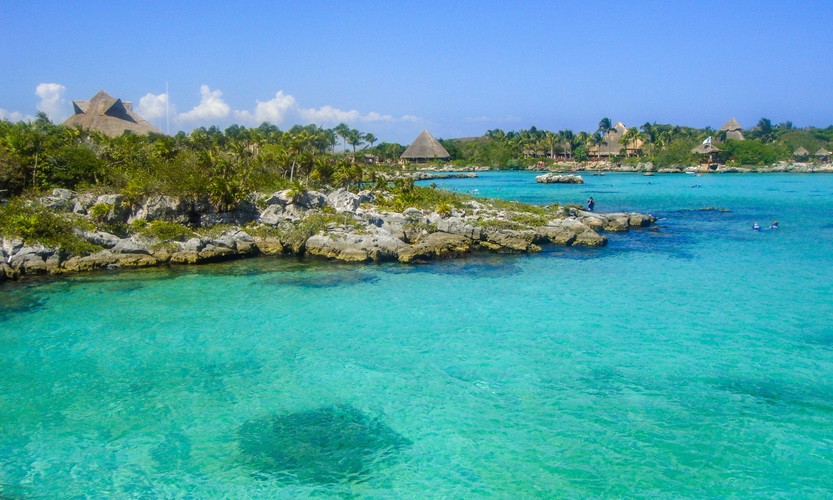
Mexiko: The best Cenotes in Yucatan: Xel Ha
- Swim on tubes across the river
- Discover cenotes and caves
- Lighthouse with a fantastic view
- Zip lines
- Jungle hike
- All inclusive catering including non-alcoholic drinks
- Children’s playgrounds etc.
The best Cenotes in Mexico: Xcaret

The best Cenotes in Mexico: Xcaret
The best Cenotes in Mexico: Eden (14 meter)
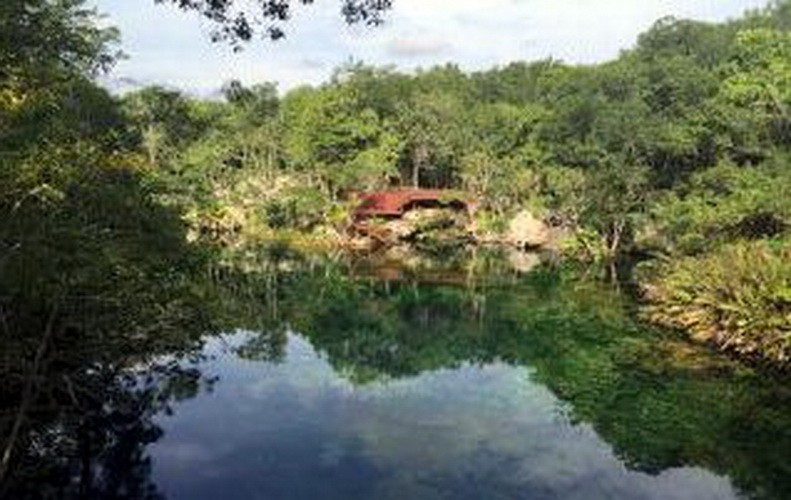
The best Cenotes in Mexico: Cenote Eden
Divers start the dive along a wide tunnel with lots of light. At a maximum of 14 meters/45 feet, the Halokline gives dramatic effects through the incoming daylight. Do not forget your underwater camera! Due to its shallow depth, this cenote is also suitable for beginners. You can observe the halocline (dividing line between fresh and salt water) at a shallow depth. Particularly impressive are the temperature differences between the warmer salt water and the refreshing fresh water.
The best Cenotes in Mexico: Chichin Ha
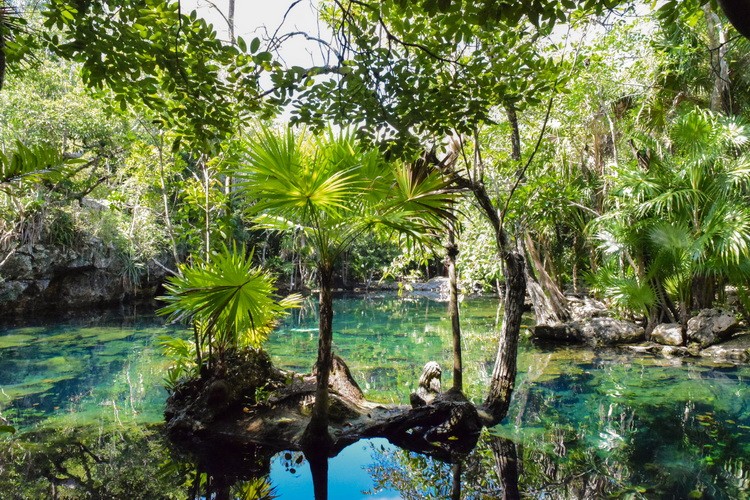
The best Cenotes in Mexicoo: Chickin Ha
Chichin Ha is close to Playa del Carmen. From the country road you have to drive a good distance on a gravel track through the jungle.
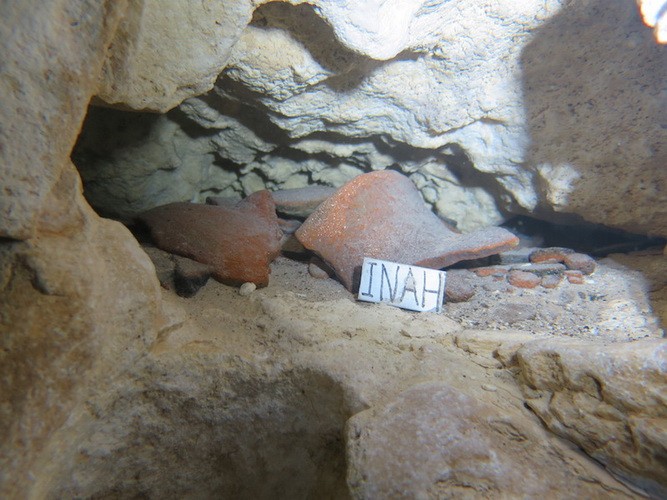
Cenote The Pit, Riviera Maya with archeological findings
Divers with a visit to the National Park can combine the deep dive Pit with a shallow dive in Dos Ojos. The Cenote The Pit is a round cenote. To enjoy all the beauty of this cenote, you have to go down deep. That’s why we also need an Advanced Open Water or Deep Dive Adventure Dive for this dive.
The light falls from the surface like laser beams and accompanies us to the depths. The Halokline is about 30 meters and is surrounded by an impressive sulfur cloud. During the dive you can find Mayan relics and animal bones. The Pit is a clear favorite for many divers.

The best Cenotes in Mexico: Dos Ojos
Cenote Dos Ojos – Barbie Line (8 meter, 24 feet)
The first dive follows a circular walk of about 500 meters. This dive is very shallow. Accompanied by a lot of natural light, you can emerge anywhere in the shortest time on the surface. That’s why this dive is good for beginners. The incidence of light creates impressive light formations. Dreamlike stalactites hang from the ceiling. Do not forget to breathe with so much beauty!
Cenote Dos Ojos – Bat Cave (10 Meter, 30 feet)
The second dive, also called Bat Cave, feels like a real cave dive. Here it is darker, because we are in an air-filled cave. Past beautiful stalactite formations, we emerge in the Bat Cave. We admire the numerous bats hanging from the ceiling. Look for fossils, proof that this tunnel system used to be below sea level.
The best Cenotes in Mexico: Calavera (16 meter)

The best Cenotes in Mexico, Yucatan Halbinsel: Gran Cenote
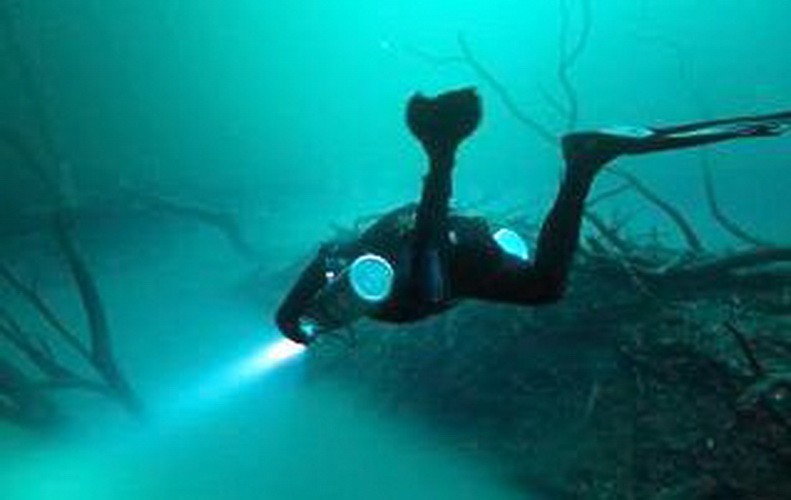
Angelita Cenote in Mexico
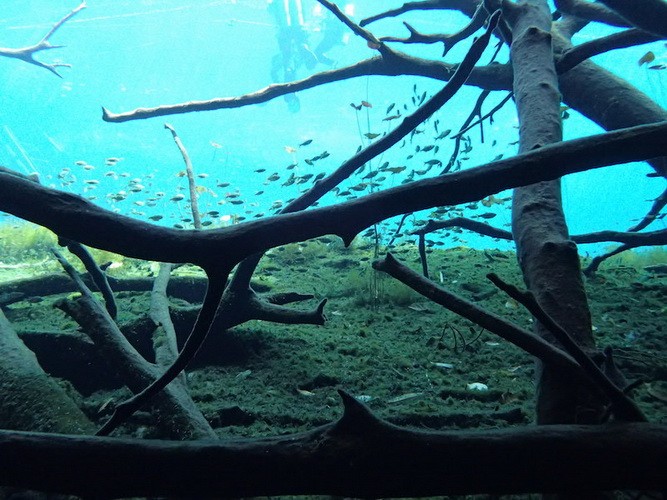
Carwash Cenote Riviera Maya
For divers the dive starts in a kind of pond. Algae and roots create fascinating light effects. It is so beautiful that we could only dive under the open water surface the whole time. But are we not there for cave diving? Inside the cenote we find bones and Mayan pottery. Even in the algae-free season, we expect amazing plays of light. One of the most beautiful cenotes in the area.
The best cenotes in Mexico: Dreamgate
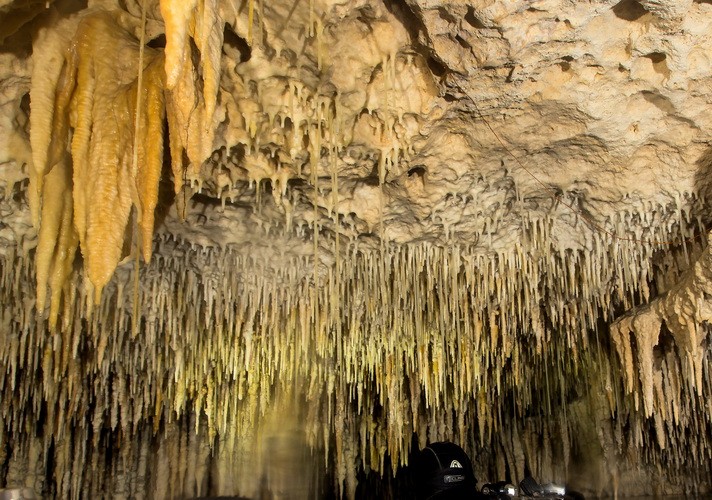
Dreamgate Cenote in Mexico
Because of the shallow depth, good buoyancy is a must, so that no slag from the ground is whirled up. Slowly we follow the tunnel system and have enough time to admire the breathtaking formations around us.
Summary
- The cenotes in Mexico were formed millions of years ago
- Already the ancient Maya used the cenotes for their fresh water supply
- Sulfur clouds in the cenotes are formed by the separation of fresh and salt water
- Many cenotes line the main road of the Riviera Maya
AFFILIATE LINKS
This article contains product recommendations in the form of affiliate links. If you buy something through these affiliate links, we get a small commission. This does not change the price for you.

Hello, my name is Birgit and I write about interesting topics around vacations in Mexico and traveling on the Yucatan peninsula. I would love to hear from you and I am always happy to receive ideas and recommendations for new articles.
Enjoy reading!!!
Follow us
Interesting blog posts
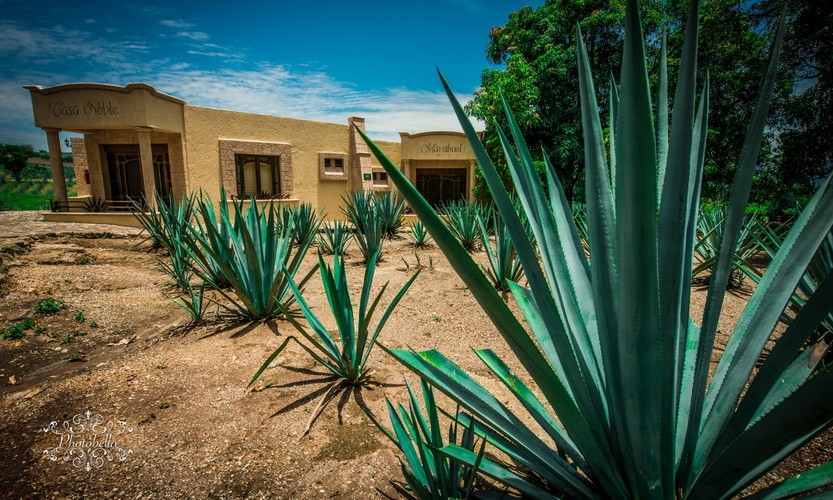
High quality tequila: Recommendations from Mexico
Tequila from Mexico How to recognize High Quality TequilaHigh Quality Tequila: Recommendations from MexicoOne of Mexico’s most popular souvenirs is tequila. It is the most famous form of the Mexican national drink Mezcal and is extracted from the heart of the blue...

Biodegradable sunscreen
Biodegradable Sunscreen Coral ProtectionBiodegradable sunscreen: Coral ProtectionA special consideration for the vacation luggage to Mexico should be the right sunscreen. Because we have to protect our skin against the strong sun and dangerous UV rays. However, the...

The History of the Maya: An Introduction
History of the Maya Between Myths and Knowledge: An IntroductionHistory of the Maya: An IntroductionThe Maya were excellent mathematicians, architects, astronomers, doctors and very religious people. Their daily life was permeated with rituals and ceremonies. Native...

The best mosquito repellent for Mexico
The best mosquito protection For Mexico and the CaribbeanThe best mosquito protection for Mexico and the CaribbeanThe vacation is booked - off to Mexico and the Caribbean. The anticipation of balmy summer nights, tropical rainforests and dream beaches rises!!! If only...
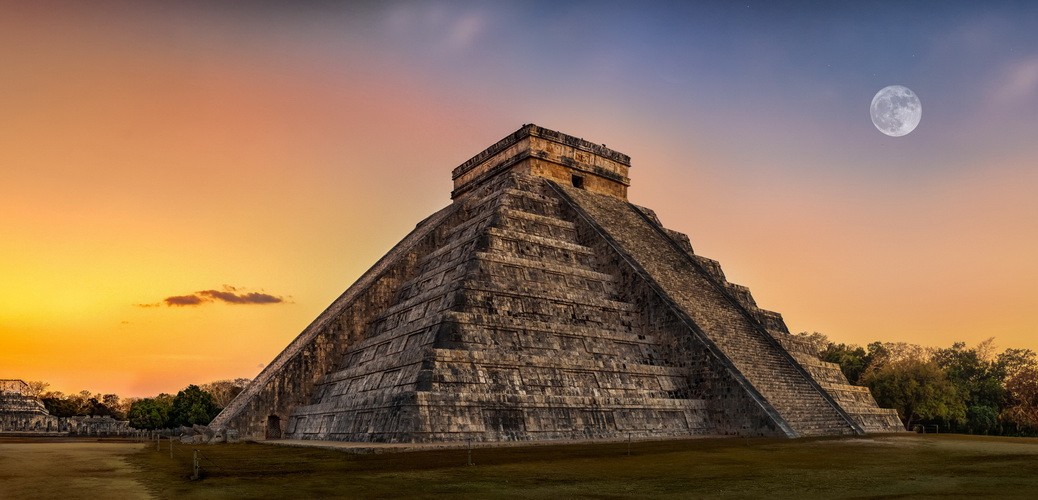
Chichen Itza Travel Guide
Travel Guide Chichen Itza History | Arquitecture | Insider TippsChichen Itza: Travel Guide into the Mayan WorldIt is a once in a lifetime opportunity to see the famous Mayan ruins of Chichen Itza. For many visitors, the culture of ancient Mexico has so much...
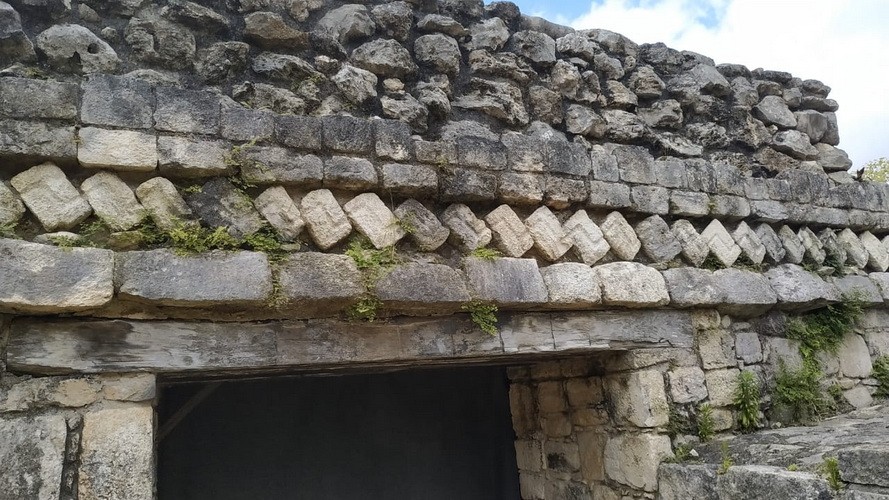
Private Excursions Riviera Maya
Riviera Maya Private Excursions Certified Guides | Personal Support | Pick upPlaya del Carmen: Private Excursions Riviera MayaTreat yourself in a very special way - discover the Riviera Maya with our Riviera Maya private excursions. Our certified tour guides will show...

